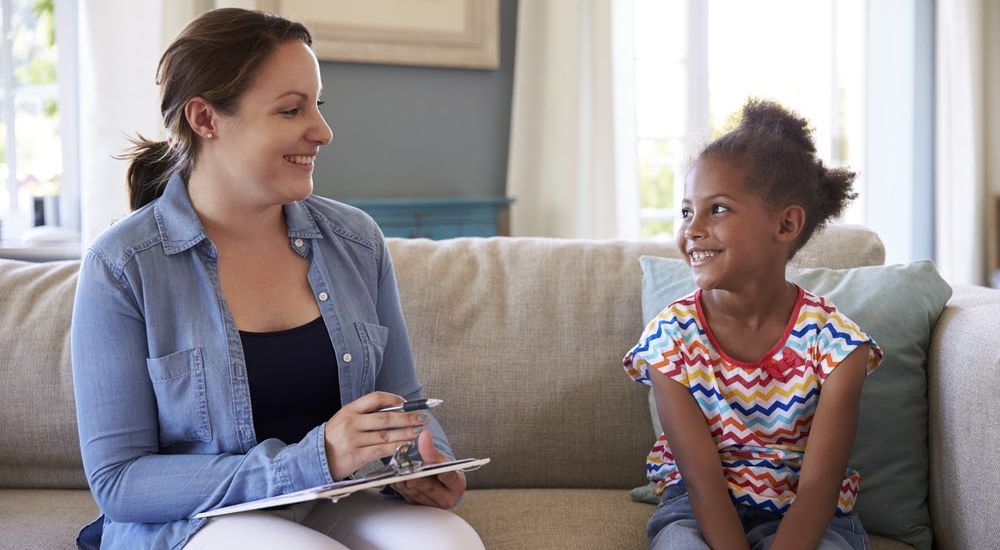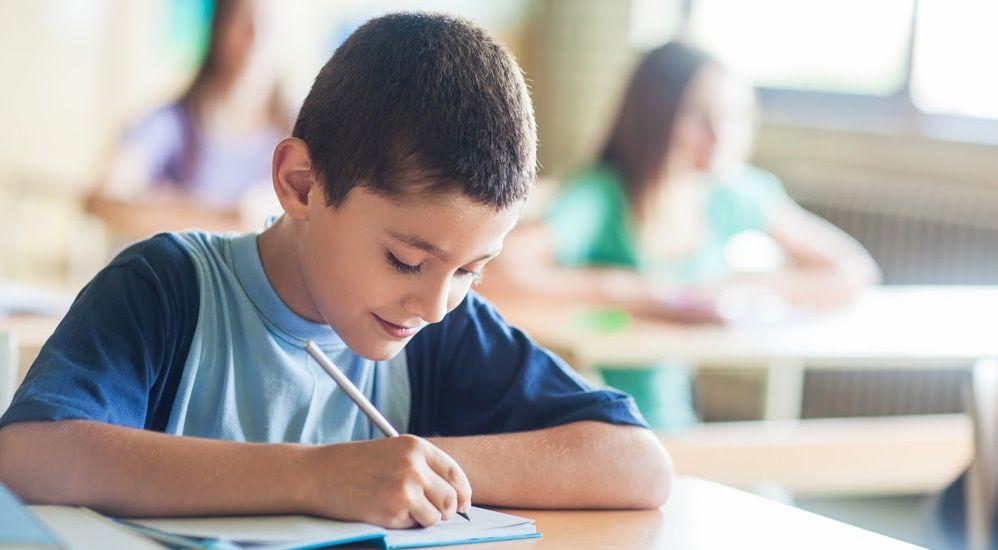According to the Centers for Disease Control and Prevention, 7.1% of children aged 3-17 years (approximately 4.4 million) have diagnosed anxiety. The Diagnostic Statistical Manual, 5th edition (DSM-V) is the rather large reference manual that clinicians, psychiatrists, psychologists, and therapists use to diagnose psychological disorders, like anxiety. They use it to compare the symptoms your child is experiencing to a checklist that categorizes those behaviors into various disorders. Of course, anxiety can manifest in children in a variety of ways, especially when there may be other mental health issues or childhood trauma happening at the same time. Some common symptoms include frequent expressions of worry, frequent fatigue, bodily complaints such as headaches, muscle tension, or stomach aches, and difficulty sleeping. This is not an exhaustive list of symptoms or diagnosis criteria, but some of the most common. So at this point, you know what anxiety is, you have been witnessing your child experience it, you have gone to the doctor or therapist and your child has a diagnosis ….now what?
What can parents do to help? What comes next? Medication? Therapy? Special Education referral? A 504 plan? The answer isn’t easy, and there is no one-size-fits-all solution for helping children with anxiety. The treatment and interventions that help your child could be completely different than what works for another child…even within the same family! Thankfully anxiety is a well studied phenomenon and there are lots of ways parents can help their child through their experience.


Where to Start?
There are a few different routes for intervention, and the route that is best for your child depends a lot on the type of anxiety they are experiencing and the severity. First, let’s talk about medication. Parents can go to their child’s pediatrician and get a prescription directly from them or they can ask their pediatrician for a referral to a psychiatrist. A psychiatrist is another medical doctor that can write prescriptions and make psychological diagnoses. Some common anti-anxiety medications include: sertraline (Zoloft), fluoxetine (Prozac), escitalopram (Lexapro), and citalopram (Celexa). There are pros and cons to taking medication. A pro is that medication can correct a chemical imbalance in the brain, which can be one of the causes for anxiety. A con of medication is that your child may experience side effects, that sometimes make their symptoms worse (i.e. sleep problems, nervousness, nausea). And something to consider with medication is that the first medication you try might not be the right fit. It may take multiple attempts to find the correct kind of medication and dosage that works the best for your child …at that time. A medication that worked when they were 10 years old might not be as effective during or after puberty due to weight gain and other factors. Lastly, the con a lot people worry about, but don’t necessarily like talking about, is the stigma of taking medication. Ultimately the decision to give a child medication is not to be taken lightly and is ultimately the guardian’s choice. Parents/guardians are the experts on their child. However, keep in mind the world has changed a lot in the past twenty years. Mental health is discussed far more openly now, than in the past. If medication is what is going to help your child manage their symptoms and have a higher quality of life, it could be worth it.
Types of Therapy to Consider
Another treatment option is therapy. The most common form of therapy for anxiety is Cognitive Behavior Therapy (CBT). CBT works on helping your child change their negative thoughts and worries to be more positive. This is frequently done through describing anxious situations, listing what they were thinking and feeling, and what the outcome was, then challenging their negative thought patterns and processing how they could change their behaviors. CBT is often paired with mindfulness. Mindfulness can come in many forms: meditation, mindful eating, breathing exercises, yoga, coloring, etc. The overall goal of mindfulness is to practice being in the present moment, not thinking about the past or future (which many people with anxiety do).
Therapy can occur on various levels of intensity depending on the severity of the child’s anxiety. Very severe cases (i.e. suicidal thoughts, self-harming, school refusal) may require inpatient hospitalization, or outpatient day treatment programs. Inpatient hospitalization involves the child being admitted to a mental hospital overnight for multiple days. This typically lasts a few days to a week. After inpatient treatment, most children will be transferred to an outpatient day treatment program. These programs may last a whole or half school day for several weeks. For less severe cases, a typical intervention is outpatient therapy sessions with a therapist in a private practice, or through a clinic for about an hour once a week to once a month (depending on the level of the child’s needs).


Classroom Accommodations
Therapy and medication are both treatments that occur outside of the school setting. Therapists often have recommendations for parents, but for school staff as well. Sometimes a 504 plan or Individualized Education Plan (IEP) are recommended. A 504 plan is a legal document that outlines accommodations that must be provided for the student to gain access to the regular education curriculum. These accommodations are provided by the regular education teacher. (i.e. preferential seating, pre-prepared notes for the student, extended time on assignments). An IEP is a legal document that outlines accommodations, changes to curriculum, and/or placement that must be provided for the student to have an appropriate education. These changes and accommodations are provided by regular and special education teachers (i.e. the student receives specialized social skills instruction, specialized instruction in math, self-contained setting). Both of these documents are dictated by federal law and must be followed. Keep in mind, not every child with a medical diagnosis of anxiety (or any medical diagnosis) requires a 504 plan or needs special education (an IEP). So if your child’s mental health provider recommends a 504 or IEP, discuss this recommendation with your school psychologist, school counselor, teacher, and/or principal. Some common classroom accommodations for students with anxiety include: altered passing time (so they’re in the hallway with fewer children), teacher check ins for understanding, breaking down large projects into smaller deadlines, daily-weekly check ins with the counselor or school psychologist, small group that works on mindfulness and/or CBT, testing in a quiet environment, use of earbuds/headphones when appropriate, and more. Sometimes the recommendations from the doctor or therapist are already being done, or can be achieved in the classroom without an IEP or 504 plan. The ability for the school to make these accommodations may be staff and resources dependent. Unfortunately, not all schools have adequate mental health staffing due to budgets and national shortage in the profession.
In conclusion, no matter what types of treatment, medication, or services you choose for your child, there is no one magic solution, your child may need a combination of medication, therapy, and school services, or just some, or all, or none! Just remember that you and your child are trying your best and you’re not alone! Be kind to yourselves, each other, have patience, and hope. In the words of Fred Rogers, “Look for the helpers. You will always find people who are helping.”



